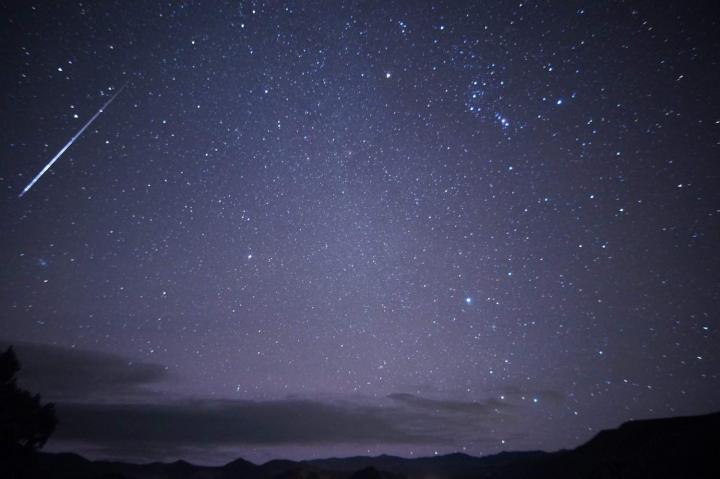October is a special month for skygazing. With the autumnal equinox, the seasons have turned, and we’ll enjoy darker night skies ahead. Gaze up anytime after dinner, say around 8 p.m., for star-filled planetarium conditions through the end of the month. Here are the highlights.
Comet of the Century?
If you’ve spent any amount of time on the internet, you have probably read about the Comet of the Century. Comet C/2023 A3 (also known as Tsuchinshan-ATLAS) will be very bright in very late September and early October… however, it will also be VERY near the Sun. We’re talking about 6 degrees or so. I do not expect it to be highly visible to the naked eye. Instead, it will be more of a photographer’s comet. And, for serious amateur astronomers with a totally unblocked, ocean-like view of the horizon, a telescope owner’s comet, maybe. However, it will not be nearly as nice as Neowise and a few other comets we’ve had during the past 30 years.
October 2: Annular Solar Eclipse
A “Ring of Fire” Solar Eclipse can be seen in Patagonia, the southernmost regions of Chile and Argentina. Learn more about Annular Solar Eclipses.
October 5: The Morning Show
Venus returns as an evening star early in the month and hovers right next to the waxing crescent Moon tonight.
October 8 to 9: Draconid Meteor Shower
The Draconids may not be a major meteor shower (about six meteors per hour), but they kick off the busy meteor shower season! In 2024, the shower will peak when the Moon is 29% full, so moonlight will present minimal interference. The best time to watch the Draconids is early evening on October 8. See the Meteor Shower Guide for more information.
October 14: Saturn Makes an Appearance
Saturn, the ringed planet, is next to the Moon. The golden planet shines steadily (versus the twinkling stars) high in the sky, making it a gorgeous evening view.
October 20: Hello, Jupiter!
The giant planet Jupiter rises around 9:30 P.M. tonight and will meet up with the Moon.
October 17: Full Hunter’s Supermoon Rises
October’s full Moon appears on October 17, 2024, at 7:26 A.M. Like last month’s Harvest Moon, the Hunter’s Moon is tied to an astronomical event, the autumnal equinox, and rises around the same time for several nights in a row… so start looking for it on Wednesday, October 16! Learn more about Hunter’s Moon—and why it often appears bigger!
This Hunter Moon will be extra special! It will be the closest Supermoon of the year… which means that this Moon will be bigger and brighter than ever!
October 20 to 21: Orionid Meteor Shower
Another overhead phenom this month will be meteors. The Orionids, which peak around the 21st, zoom through the sky at 41 miles per second and deliver a shooting star every three to five minutes. Each of these streakers are apple-seed-sized pieces that fell off history’s most famous celestial object – Halley’s comet.
In 2024, the Orionids will be difficult to view. The Moon will be 77% full and will obscure much of the show.
Find the Moon rise/set times and planet rise/set times.

The Orionids radiate from the well-known constellation Orion the Hunter, specifically from a point near the Hunter’s Club. When looking for the meteor shower, look away from the Moon towards darker regions of the sky.
October 24 to 28: Look for Venus
Look for Venus, who has brightened to an incredible -4.0 magnitude. It can be located above Scorpious’ famous orange-color “heart,” the star Antares. With an unobstructed horizon, the pair can be seen low in the southwest at around 6:00 P.M.
October 31: Happy Halloween!
It’s spooky out there… so be on the lookout for witches and goblins; oh my! This Halloween, the Moon will be a waning crescent, approximately 1% illuminated (just a sliver of a Moon!). Find out how rare a Full Moon on Halloween is.
In addition to the trick-o-treaters, the Pleiades will also be on display… learn all about the seven sisters of Halloween.
The Milky Way
Tilt back your head and look straight overhead. In October, you’ll see the Milky Way split the sky from north to south and crossing the heavens overhead. A century ago it was widely believed to be the entire cosmos. Now we know that our Milky Way galaxy is just one of hundreds of billions that make up the universe. See my new post on taking it straight up!











